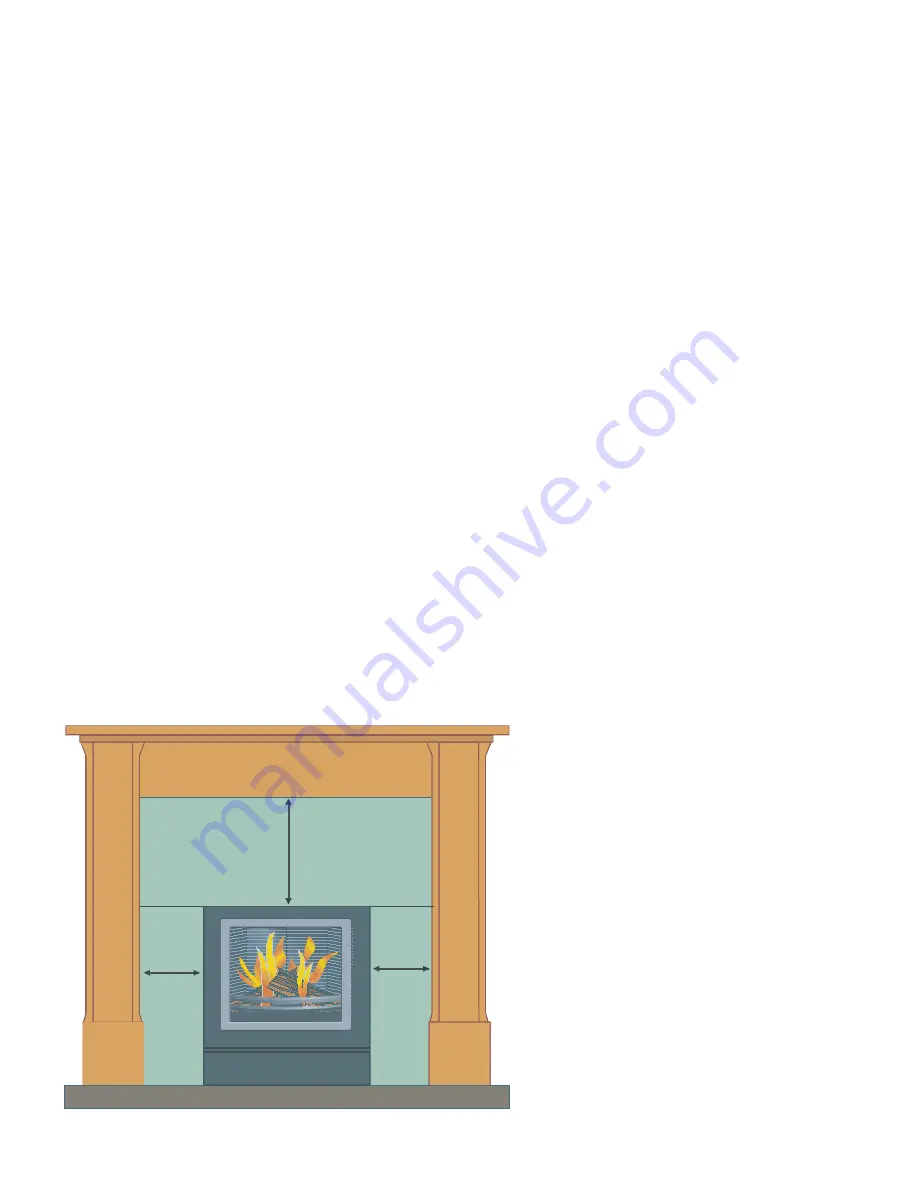
© EUROHEAT DISTRIBUTORS (H.B.S) LTD. October 2012
E & OE Instructions Part number IN1264 Edition A
15
The Hearth and Fire Surround
Whilst the existing regulations require the hearth to protrude in front of a solid fuel appliance by a minimum
of 250mm we strongly recommend that this distance should be 300mm. These rules make provision for the
protection of the property in the event of burning fuel falling from the fire, but the height of the fire bed in an
open fire or conventional stove is not very high and as the horizontal distance any falling item travels is, amongst
other factors, dependant upon the height from which it starts, it should be apparent that anything falling from an
insert stove positioned with its fire bed one meter above the floor will have the impetus to travel further across
the floor than the regulations allowed for. A hearth having an edge lip is preferable to a simple flat hearth in its
ability to reduce the hazard but because no hard and fast rules can be given you have to assume that Murphy’s
Law which states that “If it can, it will” applies and any combustible flooring should be kept well out of range of
the likely and even unlikely range of falling embers.
Germany has a long tradition of stoves called “Kachelöfen”, which are stoves built into a tiled structure that acts as
a heat store. The insert stove installed within its brick or block housing will behave in much the same way, using
the bricks as a heat store. Although the brickwork will never become excessively hot it will become very warm
if the stove is kept burning at a high rate. For this reason anything attached to the wall will also become very
warm. This may cause damage to oil paintings and cause accelerated ageing in photographs and we advise you
to restrict the pictures you hang on the walls of the stove housing to those which are of limited importance.
There has been a revival of interest in all forms of real fires and fire surrounds of every possible style and
material now abound but sadly not all are built to the highest standards or with materials best suited to the
high temperatures they will be subjected to. The minimum distances given in the drawing below will ensure
the surround will be subjected to safe temperatures but it will not guarantee that a fire surround made from
unseasoned wood will not shrink. If stone is to be used in any part of a fire surround it is important that both
the shape and fixing allow for the stone’s expansion as its temperature rises. Failure to make provision for the
uneven expansion a fire surround will inevitably result in the stone cracking, in general the stone surround should
comprise of four or more sections.
Minimum distance from extreme of stove
front frame to any combustible material
above the stove is 300mm and to the sides
200mm. This includes wall coverings such as
wallpaper.
All fire surrounds must be suitable for a real
fire.
All stone must have provision for uneven
expansion.
A non-combustible hearth must be provided in
front of the stove to a minimum of 300mm.
A fire guard must be fitted if children or infirm
adults are at risk of coming into contact with
the stove.
300mm
200mm
200mm






































